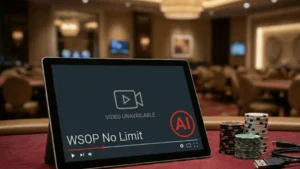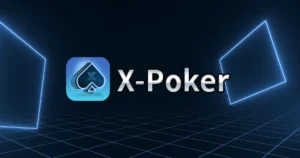Transparency as a Turning Point
In April 2025, partypoker released its annual integrity report, announcing that it had closed 291 bot or fraudulent accounts in 2024 and returned $71,771 to affected players.
Just two months later, on June 26, WPT Global disclosed that between January and May 2025 it had banned dozens of accounts and redistributed approximately $166,885.
These announcements mark a shift in the industry. While operators previously handled bot cases quietly behind the scenes, leading platforms are now publishing numbers openly, signaling both proactive enforcement and the continuing scale of the problem.
The Evolution of Poker Bots|From Rules to Human-Like AI
Stage 1|Rule-Based Scripts and Screen-Scraping
The earliest bots followed simple rules — folding weak hands, raising strong ones — or scraped screen pixels to trigger automated actions. Their rigid patterns made them easy to detect.
Stage 2|Solver-Driven Decision Trees
With the spread of GTO solvers, bots advanced by using pre-computed betting charts and frequency tables. This allowed them to mimic optimal play for the long term, though they remained vulnerable to exploitative adjustments.
Stage 3|Machine Learning Networks and Humanization Layers
Modern bots train policy networks on solver outputs and refine them through self-play. To avoid detection, many now add a “humanization layer,” such as:
- Randomized decision times to imitate thought processes
- Small variations in bet sizing to look less robotic
- Scheduled breaks or table changes to mimic human routines
These refinements make bots significantly harder to detect.
Parallel Path|RTA (Real-Time Assistance)
Unlike fully automated bots, RTA tools give players live solver outputs during play. This “human–machine hybrid” is particularly difficult to spot through behavioral data alone. Operators like PokerStars explicitly ban RTA, with violations leading to suspensions and confiscated funds.
The Player Trust Crisis|Doubts at the Lower Stakes
On forums such as CardsChat and TwoPlusTwo, many players continue to voice concerns that bots are more common at lower stakes. While no official statistics confirm this, even the perception of widespread botting can change player behavior.
One recreational player described losing multiple sessions at fast-fold tables where opponents acted with near-identical timing and bet sizes. After reporting the account without immediate feedback, he chose to stop playing on the site altogether.
These stories illustrate the broader chain reaction: casual players leave, table liquidity shrinks, and even professionals struggle to find sustainable action. Trust, once lost, threatens not only individual bankrolls but the stability of the entire poker ecosystem.
Five Warning Signs of Potential Bots
Determining whether an opponent is a bot requires multiple red flags. Industry insiders often point to five key categories:
Behavior and Rhythm
- Consistent decision times regardless of hand complexity
- Extended, fatigue-free sessions across thousands of hands
- Clockwork schedules resembling shift work
Bet Sizing and Frequencies
- Fixed bet sizes such as 33%, 50%, or 75% of the pot
- River frequencies too close to theory, with little human deviation
- Rigid strategy shifts between linear and polarized ranges
Statistical Profiles
- Unusually stable VPIP, PFR, and 3-bet rates over large samples
- C-bet and barreling frequencies that remain almost constant
- Perfectly balanced 4-bet/5-bet distributions rarely seen in real humans
Table Selection and Game Dynamics
- No adjustments to specific opponents despite exploitative play
- Unchanged strategies even as player pools rotate
- High-speed formats (e.g., Zoom) handled with near-perfect consistency
Missing Human Elements
- No chat activity or table talk
- No tilt or misclicks, even after severe downswings
⚠️ A single trait is not enough, but when several overlap, suspicion becomes credible and should be reported through operator tools.
Platform Countermeasures and Challenges
- PokerStars: Relies on large-scale data analysis to flag abnormal patterns such as identical reaction times, though humanized bots can slip through.
- partypoker: Since 2024, has implemented machine learning to detect bot rings and RTA usage, though models must be constantly retrained to remain effective.
- GGPoker: Bans third-party HUDs and only permits its proprietary Smart HUD, reducing unfair advantages but limiting player self-protection tools.
- WPT Global: Publishes enforcement figures and refund amounts to promote transparency, while also revealing the scale of ongoing bot activity.
These steps show that the fight against bots is an arms race. As bots learn to mimic human behavior, platforms respond with more advanced detection — yet neither side can claim a final victory.
Conclusion: Defending the Future of Fair Play
In 2025, poker bots are more than just a cheating tool; they are a direct threat to the survival of online poker as a fair game. Operators are investing in transparency and stronger safeguards, while players remain the frontline defense by staying alert and reporting suspicious play.
This battle will not end quickly. Whether poker retains its century-long appeal depends less on how strong AI becomes, and more on whether platforms can prove the game still belongs to humans.









